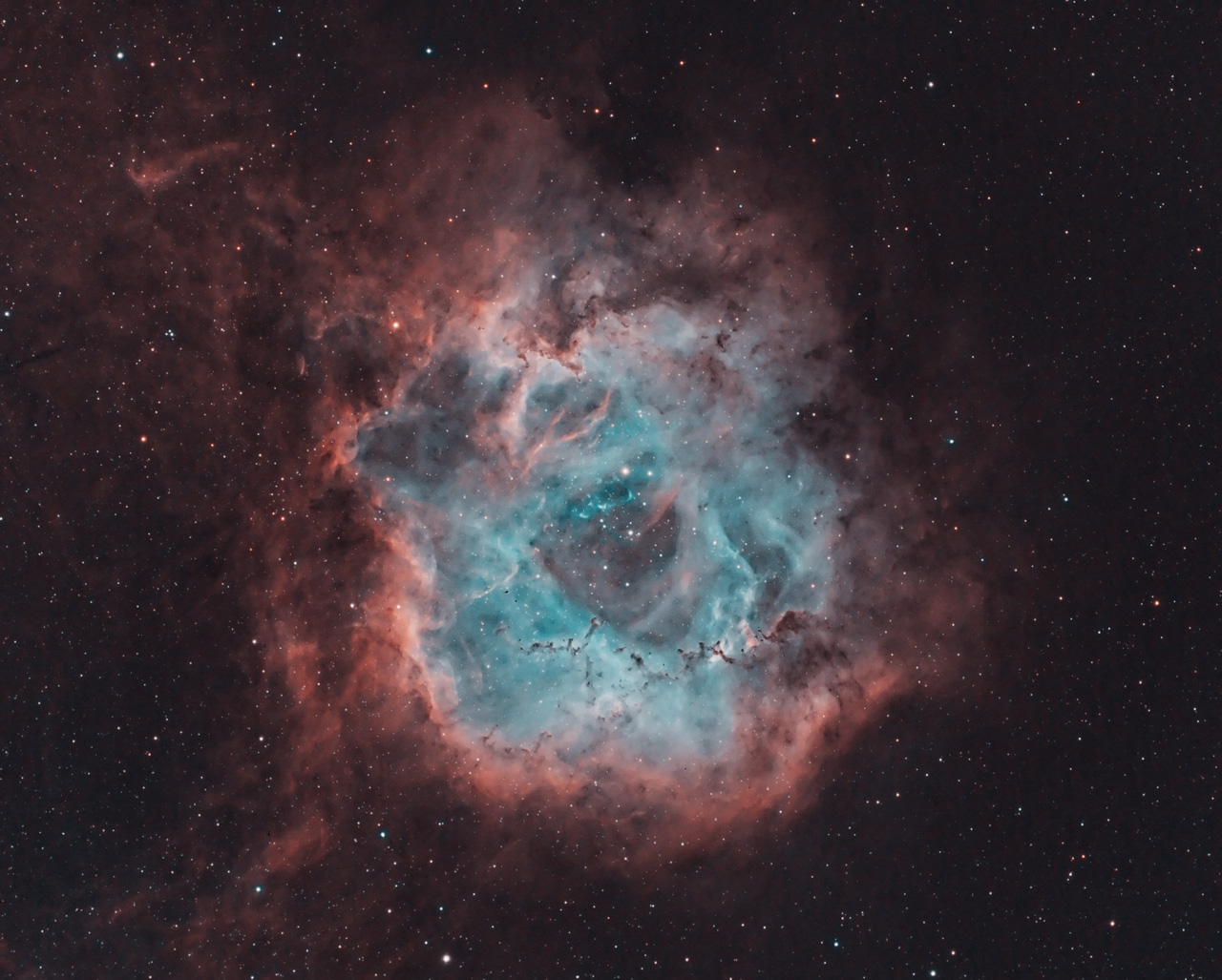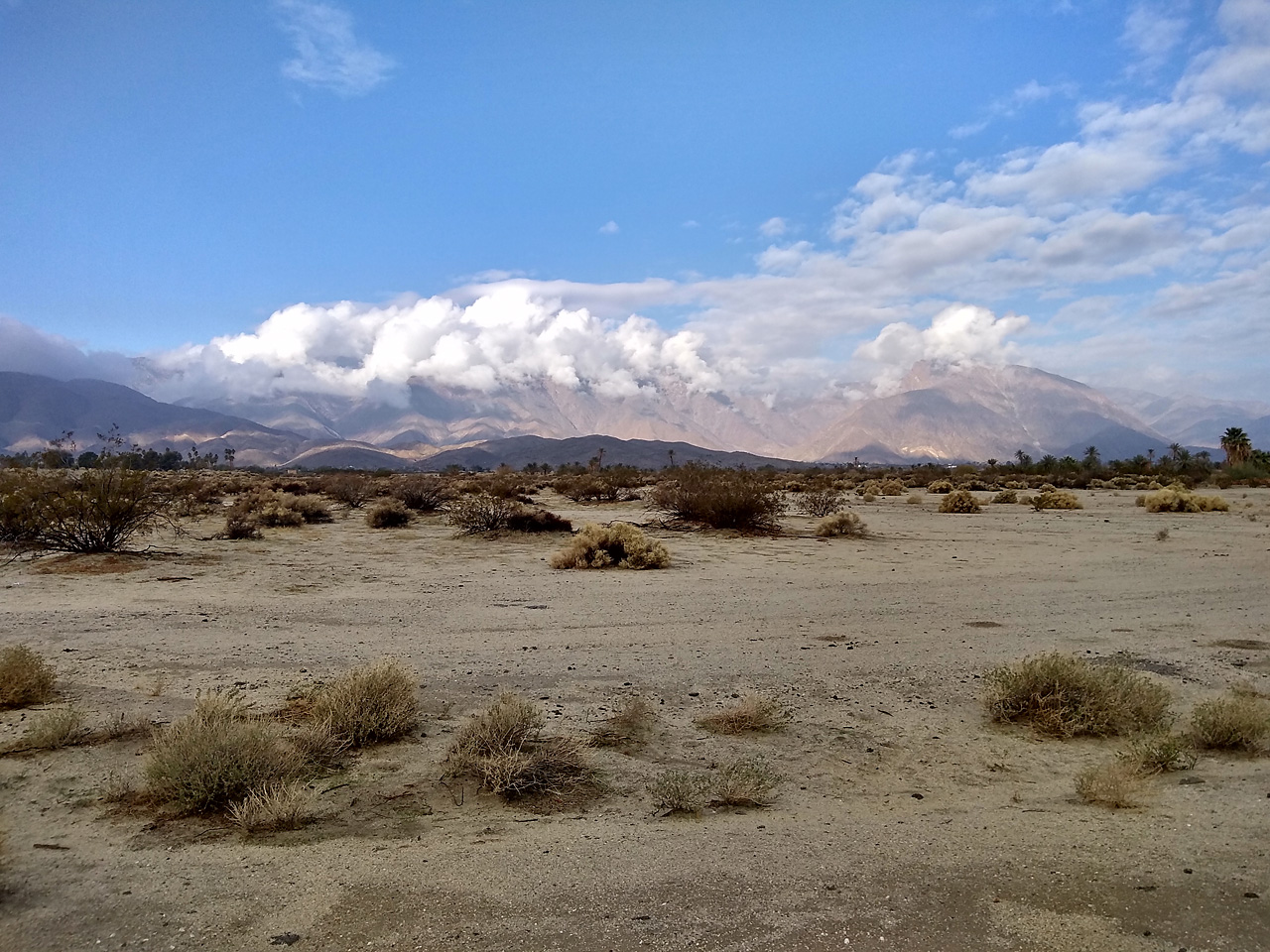We had a beautiful day yesterday, with no clouds, and temperatures approaching 80 degrees. The night before was also very good, and was my first real opportunity here to do some serious imaging. So it was “first light” for desert imaging, but also for the new ASI1600 camera.
Although I had some issues with both the camera and the mount (a Celestron AVX, which I rarely use, but was small enough to bring on this trip), the results were quite satisfying. This is the Rosette Nebula, captured with narrowband filters H-a, O-III, and S-II. This is a large target, so very suitable for the WO Star71 telescope, with a focal length of just 350mm. I used sub-exposures of just 8 minutes, as opposed to the 30 minutes I typically use with the QSI camera (which is a CCD type). As a percentage of the full well capacity the 8 minute subs produced significantly less signal than would a longer exposure. Indeed, even the brightest stars in the scene were not quite saturated. I used 12 frames of H-a and 8 each of O-III and S-II, for a total exposure time of 3.75 hours – less than half what I would typically use. The key to success here is that the CMOS sensor in the ASI1600 has much lower read noise, so a somewhat weak signal can be stretched a lot without showing too much noise. The common practice with CMOS cameras is to shoot a larger number of frames with shorter exposures. This image could definitely be improved by adding more data, but it’s already better than my last capture of the Rosette (many years ago).
To take advantage of the much stronger H-a signal, I made a bi-color (red/cyan) image with the S-II and O-III data, then applied H-a as luminance. This worked, but the red was rather weak, so I went back and added 25% H-a to the S-II to form the red channel. Compare this image with one I shot many years ago (using only H-a and O-III filters): https://wa-chur-ed.com/rosette-nebula-caldwell-49/. Some of the difference is due to factors other than the camera; notably, that the earlier image has no S-II data. However, I’m quite pleased with the results, and look forward to doing more imaging with the ASI1600.
Today is considerably less warm and sunny – giving me time to process images! But we also took a long walk this morning, after it stopped raining. The clouds seemed to be sticking to the clouds to the west of us:
Maybe the clouds were attracted to the most sunny place around – just like me!

